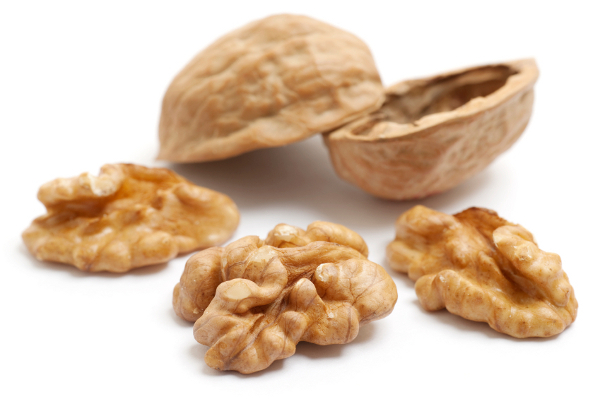Walnut meat kernels have to be dried to optimum moisture content quickly and efficiently. How do you measure that?

Nuts are one of America’s favorite snacks. Cashews, almonds, and peanuts are among this country’s most popular, but to many, the “king of nuts”—when it comes to health benefits as well as flavor—has to be the walnut. Whether part of your trail mix or breakfast cereal, baked into cookies or brownies, or just enjoyed alone, walnuts are not only delicious but also a great source of protein, vitamin E, and essential omega-3 oils. Studies show that eating walnuts is great for your skin and hair, reduces cholesterol levels, improves cardiovascular health, and enhances brain function. But producing these very healthy and very tasty nuts requires extensive processing that is all at once fast, cost-effective, and energy efficient.
Fedora Farms is based In Meridian, CA, in the middle of the state’s central valley, where nearly 99% of the U.S. crop of walnuts is grown. The facility is one of the leading walnut processing facilities in the country and has succeeded in cutting its operating costs by implementing energy-efficient processing equipment. This family-run business has always put quality first and uses automation technology in several phases of its walnut processing, including hulling, conveying, and perhaps most importantly, drying and monitoring of the moisture content of the product. In this way, the company achieves high product quality as it delivers fresh and healthy nuts to consumers.
Processing the crop
After walnuts are shaken from the trees, they’re gathered and brought into the Fedora facility so processing can begin immediately. After the hulling process removes the outer shell, the walnuts must then be dried to 8% moisture content. Extended delays between harvesting and drying may cause the walnuts to darken, allow mold to grow, increase the risk of insect damage, or otherwise reduce quality.
“Quality is the most important,” says Fedora Farms’ Chris Fedora. “We want to ensure that we deliver nice, healthy meat kernels at maximum weight so that we can get the highest return. We also want to free up the dryers as quickly as possible so we process product faster.”
Fedora enlisted the expertise of Woodside Electronics Corporation (WECO)—specialists in sorting and automation solutions for the agricultural industry—to implement the necessary monitoring and control hardware. “Although we’re always in a rush during harvest, we only dry walnuts at a maximum temperature of 110 F,” says WECO’s Don Osias. “Any higher would reduce the quality and character of the walnut’s healthy oils.”
But not too dry
Osias says the goal is to dry the nuts to about 8% moisture and that overdrying can be detrimental in several ways. In addition to the cost of the unnecessary fuel and power used to run the dryer, nuts that are overdried become brittle and easily broken during handling. Additionally, if the nuts stay in the bins too long, the grower would need to pay for additional dryers in order to accommodate the crop and get it processed and shipped out to customers quickly enough.
WECO provided Fedora Farms with burners and control fans for the dryers, along with appropriate sensors and a system controller. The instrumentation included portable moisture meters to work a custom set of radio frequency circuit boards designed by WECO that monitor the dielectric constant of the nuts in order to determine their moisture content. This method involves passing low-frequency radio signals or electrical currents through the walnuts. Correlations are established between the conductivity of the product and the amount of moisture it contains. So when the walnuts’ conductivity reaches a predetermined value, they’re considered sufficiently dried.
Fedora Farms’ automation system uses the moisture information to open and close the air door under every bin at just the right time. Fans and burners are shut down as soon as the nuts in the bins are dry. This makes processing faster, increases profit, and also saves energy.
“Let’s say you overdry from the recommended 8% down to 6%,” Osias explains. “You’ve just lost 2% of your profit in reduced weight—that’s a big cost. Also, the drying process slows down over time. So overdrying to that 6% can mean 20% to 30% longer in the drying bins. That means you’re paying for 20% to 30% more power and fuel than what’s really necessary.”
Opto 22 SNAP PAC brains (processors) and I/O are the key components in WECO’s automation systems. Analog and digital input modules gather all process data and adjust temperatures and other variables. Analog and digital output modules control the air doors, fans, and burners. Networked scanners collect the moisture information from each bin and send it to a PC so operators know exactly how the drying process is progressing.
Data is collected and displayed in either text or graphic form on networked PCs and backed up to a local network attached storage device or remote FTP site. “All of the equipment connects to the rest of the world with simple CAT 5 networking cable to provide browser based access from anywhere in the world,” says Osias.
Fedora adds, “By monitoring the moisture in those bins and having the automated door controls, it allows us to hit that 8%, shut things off, and ship the product right away, which frees up more dryer space. With the technology provided by WECO, we’ve become more efficient and consistent. Without it, it would be nearly impossible to process the huge volume of product we do.”
Ben Orchard is an application engineer for Opto 22.
Related links:
- FedoraFarms.com
- www.Opto22.com
- Weco
- Video: Fedora Farms



